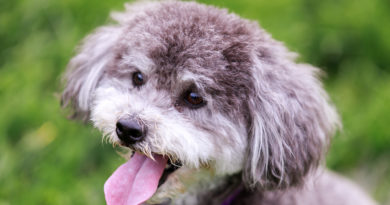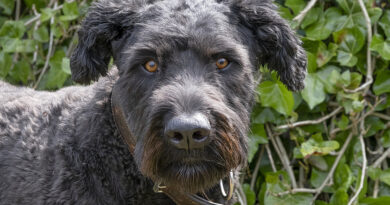Basset Hound – All you need to know
Featured image by © bigstockphoto.com / eriklam
What is a Basset Hound?
The Basset Hound is among the most appealing and instantly recognizable breeds. It has been claimed that the origins of the Basset Hound stems from a cross between the Bloodhound and the Beagle, while others say it was derived from Stag hounds. Another theory is that the Basset descended from the old St Hubert hounds, which were reportedly used by the British land gentry when hunting on foot. “Basset” is French for “Low”, as they don’t stand too tall (only 14 inches). The Basset possesses big-dog strength and stamina, and an incredible sense of smell. Its scenting ability is second only to the Bloodhound.
Pros and Cons
- Basset Hounds are very easy-going and even-tempered dogs that work for most families
- Bassets are great with children and other household dogs. They are also good with most people.
- They have an adorable look overall, with their short, stubby legs and droopy face.
- They are motivated by food and although stubborn, can be easy to train using treats.
- Bassets have a propensity to put on weight. You must really monitor their diet
- Bassets require a lot of maintenance eye and ear care to avoid infections.
- Like most hounds, they don’t give up on a scent they like, and can get lost.
- Basset Hounds are quite prone to drooling
- Basset Hounds tend to bark, bay and howl a lot.
Appearance and Size
Group: Hound (AKC)
Height: 11 – 15 inches
Weight: 45 – 65 pounds
The short-legged Basset only stands at around 14 inches tall. He is a deep voiced pack hound with a long, powerful body, droopy eyes, wrinkled brow, and the iconic, floppy, low-set ears. Basset Hounds are tricolored (white, black and brown), lemon (pale lemon and white), red and white. Bassets were built for endurance, with full and well-rounded hindquarters, deep-chest and straight topline.

Temperament
The Basset Hound has been described as affectionate, sweet-tempered, devoted, friendly, gentle and loyal. They can also be quite stubborn at times, and are not a particularly playful breed. They have a low level of excitability, aggression, and general activity and as such don’t have a tendency to snap at children. They are ideal for any easy-going family. Early socialization and positive reinforced obedience training is crucial for this breed, as they can be quite independent.
Grooming
Although the Basset Hound is short-haired, it can be a profuse shedder. A regular once a week bushing with a soft brush is required to maintain their short coat and keep it in good condition. An additional part of his grooming routine is wiping the dog over to remove loose hair. As with all long, floppy-eared dogs, check them regularly for debris and wax buildup. The Basset only requires an occasional bath to keep him clean, but ensure nails are trimmed on a regular basis.
Health
The Basset Hound, does suffer from several health issues, with the most common being shoulder and foreleg lameness. As with most long eared dogs, the Basset is somewhat prone to ear infections because ears can droop into food, and if moist, will become infected. Ears must be checked and cleaned on a regular basis. The Basset’s loose-skinned, and droopy eyes will require you to pay close attention and wipe them regularly to avoid issues. Other issues include hip and elbow dysplasia, glaucoma, hypothyroidism, bleeding disorders, and luxating patella. As always, feed you dog good quality dog food to ensure a healthy life.

Life Expectancy
A Basset Hound’s lifespan is around 11-14 years.
5 Fun Facts about Basset Hounds
- The Basset Hound has an incredible sense of smell (40 times better than a human), second only to the Bloodhound.
- The Basset’s short stature and long, droopy ears help with smell. It’s low to the ground and the ears help stir up smells and bring them to the nose.
- Basset Hounds are not terribly great at swimming, thanks to their short, stubby legs
- Bassets are great on TV. They have appeared on shows like “The Dukes of Hazard”, and “That’s so Raven”, and the iconic “Droopy” cartoon character
- Bassets were bred to hunt and were a favorite of French Aristocrats, who used them to track rabbits, hares and other animals.
Environment
The Basset Hound makes an excellent family pet and companion. They have a low level of aggression, and are great with kids, and other canines. However, don’t expect much of a guard dog. Bassets require a moderate amount of exercise and would do OK in an apartment setting with daily walks. A small, fenced in yard is always ideal though. Bassets can be quite independent and stubborn, and pose difficulty when training. They require an owner who is patient, and who uses positive reinforcement training. It is highly recommended to start socialization and obedience training at a young age. Expect house training to be a bit difficult, so be persistent, positive and patient. This breed is particularly suited to easy-going families, or an older couple who will take them on slow walks and give them lots of love and attention.
If you’re looking to add a Basset Hound to your family, consider adopting one instead. Rescuing an animal is a win-win for all, and you save a life.
https://www.bassetrescuedfw.org/




